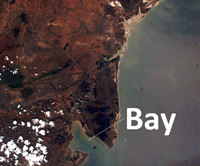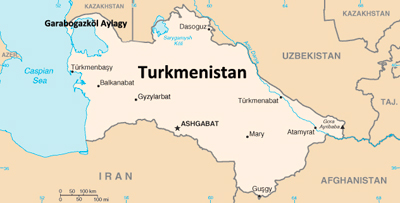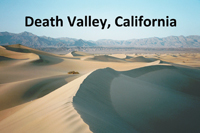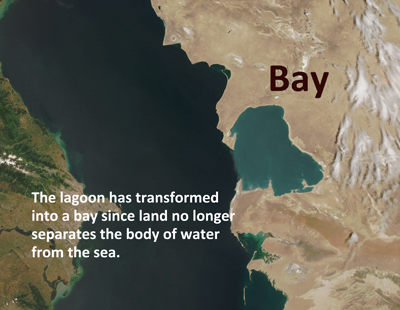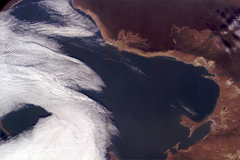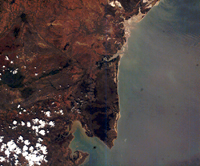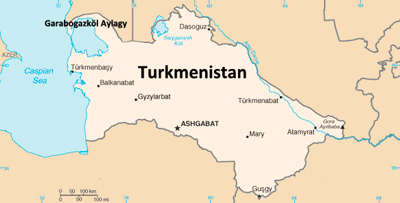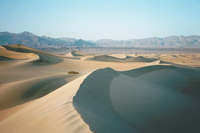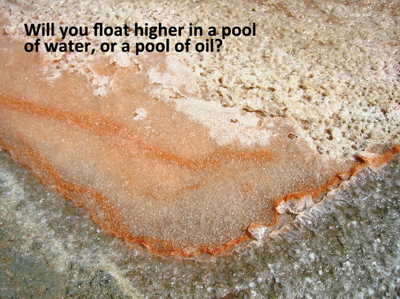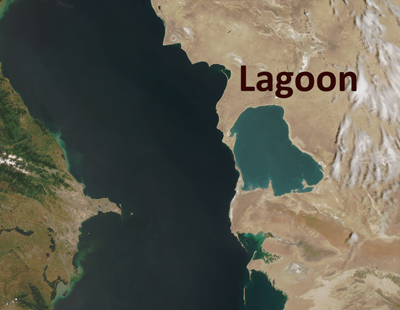Investigating Garabogazköl Aylagy
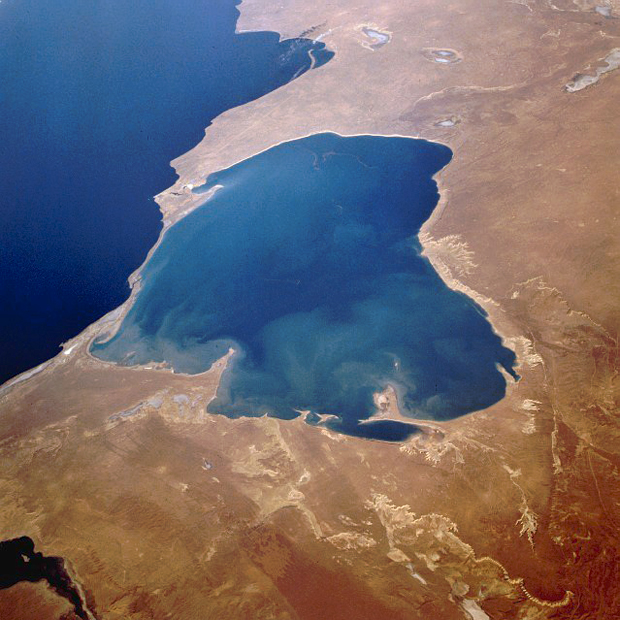
The Garabogazköl Aylagy is a lagoon of the Caspian Sea. A lagoon is a shallow body of seawater separated from a larger sea by a small barrier. A lagoon is not be confused with a lake, which is surrounded entirely by land, nor should it be confused with a bay which is open to the sea. Essentially, it is a bay that is enclosed by a small piece of land.
Interactive Question: What type of body of water is in the lower middle of this image?
For the answer to the interactive questions, put your mouse over the image to the side of the interactive question.
Location
The Garabogazköl Aylagy is located in the northern hemisphere on the Eurasian continent. It marks the northwest border of Turkmenistan, a country in the Middle East. The coordinates for the lagoon are 41°N and 51°E.Interactive Question: Can you name any other countries in the Middle East region?
Climate
The climate of the region is very interesting. It contains one of the driest deserts in the world. It receives less than 12mm (.5in) of rain each year! This is largely due to its longitudinal location and its position relative to the ocean. In general, areas in mid latitudes (25°N/S and 50°N/S) located on the west side of a continent experience a very dry climate just like Turkmenistan and the Garabogazköl basin.Interactive Question: What is the name of the driest desert in the world?
Hint: It is also located at about the same latitude and position relative to the Pacific Ocean!
Unique Features: Salinity
The lagoon is very interesting and unique. One of its distinguishing features is its high salinity. The water in the Lagoon is 35% (by mass) salt! In comparison, the Pacific Ocean's salinity is only 3.5%. The high salinity of the lagoon gives the water some interesting properties. The high salt content makes the water denser. That means that if you were to jump in the lagoon you would float almost at the very top of the surface! The high salt content also has other biological and sociological effects. There are very few plants or animals that live inside the lagoon. This is simply too much salt for life to survive inside the lagoon.Interactive Question: What would you float higher in, a pool full of oil, or a pool full of water? Hint: water is denser than oil.
Unique Features: Water Level
In addition, another feature of the Garabogazköl Aylagy is the varying water level. Because of the shallow depth of the lagoon and the dry climate, the amount of the water in the lagoon varies greatly throughout the year. Sometimes, there is so much water that it becomes a bay of the Caspian Sea (the small strip of land that separates the lagoon becomes submerged in water). Other times of the year the lagoon decreases in size dramatically. Even more dramatically, in 1984, the lagoon dried up completely!Interactive Question: What is the difference between a bay and a lagoon?
The varying water level and the salinity of the lagoon can a negative social impact on the surrounding cultures. When the lagoon's water level drops significantly, the salt from the water dries out and gets carried by the wind to surrounding areas. This can contaminate fresh drinking water and destroy the local agriculture. Although the fluctuation of water level is not a result of global warming, it is an example a negative impact of that can be brought upon global warming. A warming climate would permanently dry out the lagoon and cause the salt to be spread to the other areas. This devastates the people and the ecosystems of the surrounding areas. Interactive question: What is another negative possible impact brought upon by global warming?
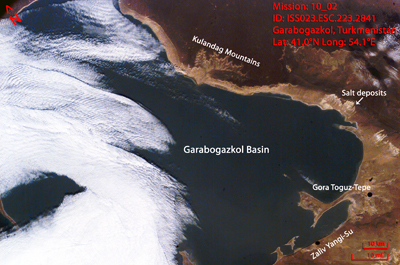
Conclusion
As seen from space, the Garabogazköl Aylagy may look like typical body of water. However, when studied up close, the Garabogazköl Aylagy turns out to be a very unique geographic feature and region. Its geographic location causes the region to have one of the driest climates in the world. In addition, the varying water level and the high salinity make the lagoon a very interesting subject to study.Brainstorming Question: What is a place you would like to study?
